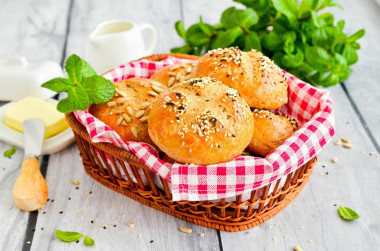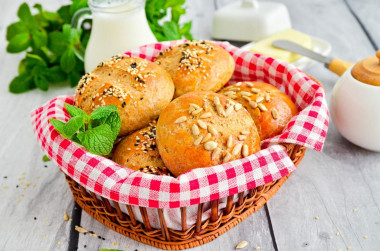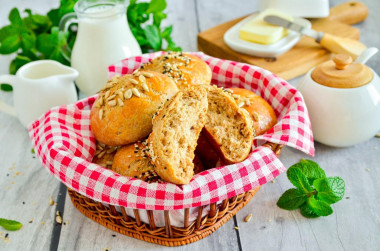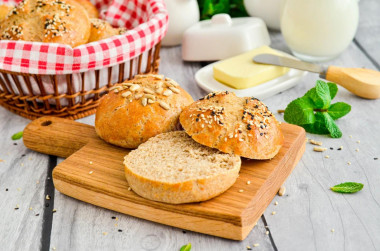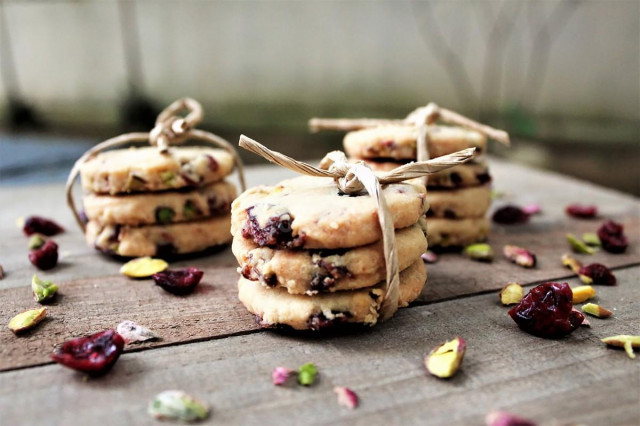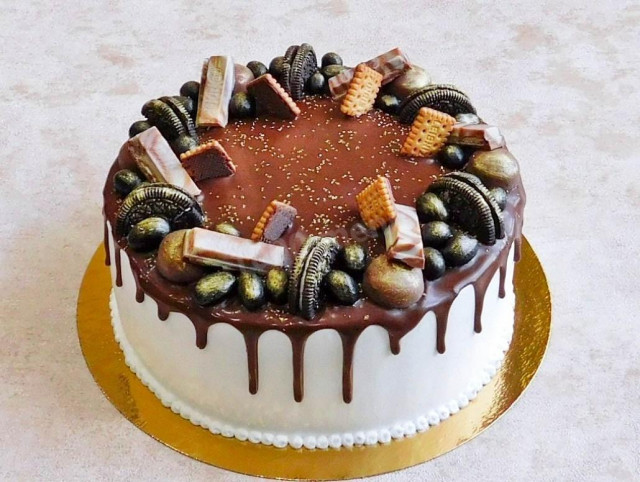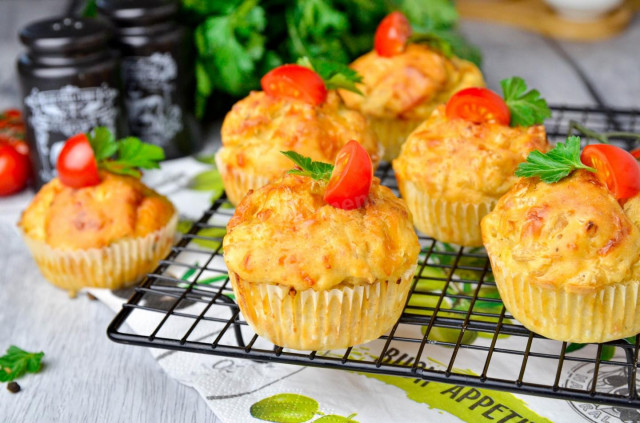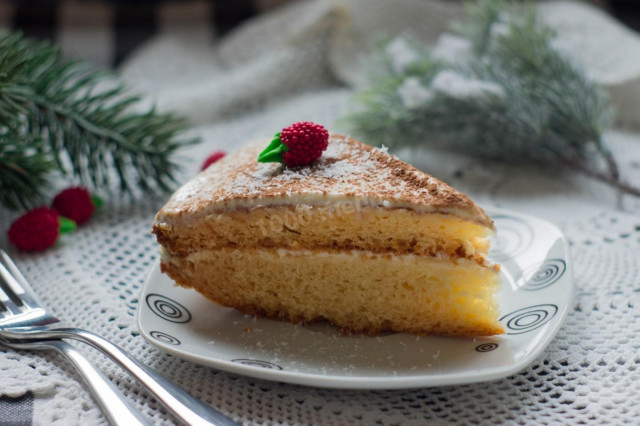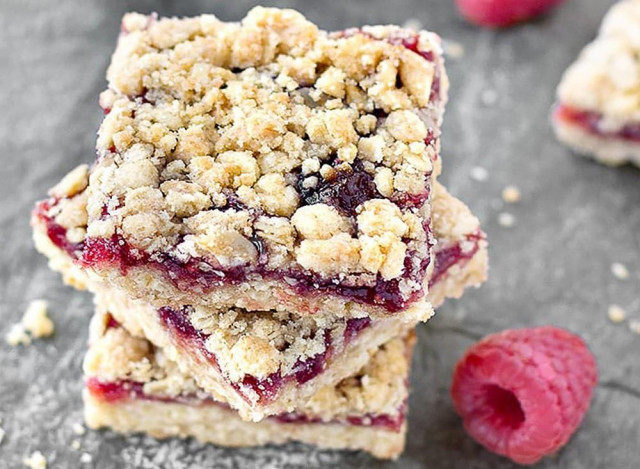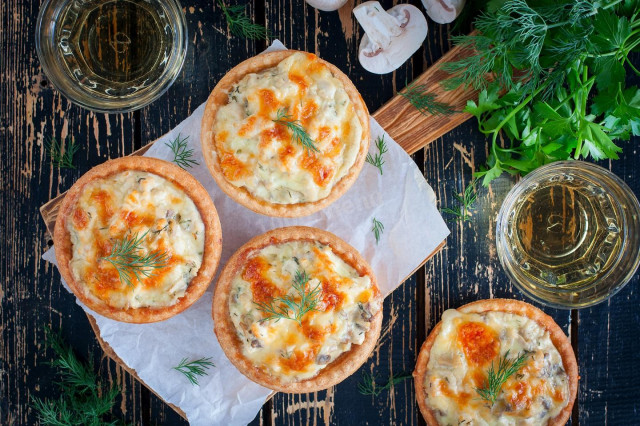Composition / ingredients
Step-by-step cooking
Step 1:
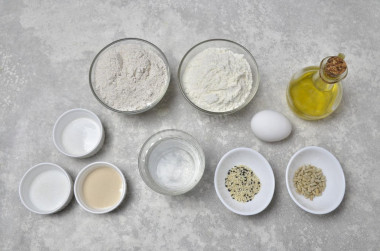
How to make rye flour buns? Prepare the products. Take the oil odorless, refined. Sesame seeds and seeds are needed for sprinkling, you can take something or not use them at all.
Step 2:
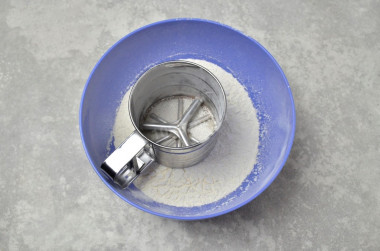
Take a large bowl and sift both types of flour into it. It is important to sift the flour to saturate it with oxygen. Then the baking will turn out to be airy and will rise well when baking.
Step 3:
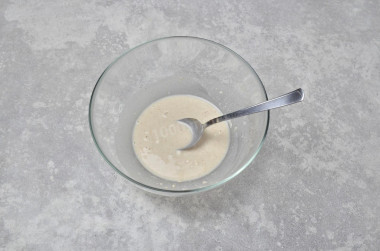
Prepare the sourdough. How to make sourdough? Take another bowl and pour two tablespoons of wheat flour into it. Take them from the total. Add sugar and dry yeast. Mix the dry ingredients. Pour half the norm of warm water into them. Mix the sourdough well to break up all the lumps. It is important to use warm water with a temperature of about 38 degrees. Hotter water will kill living organisms, which are yeast.
Step 4:
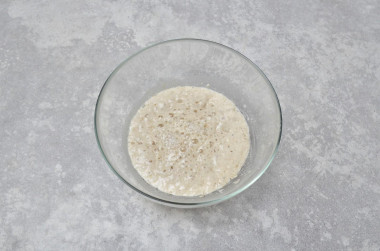
Cover the bowl with sourdough with a towel and leave for 20 minutes. It is better to put the bowl in a warm place where there are no drafts. I put it in the oven (not working). After the prescribed time, the sourdough should "come to life" — go into bubbles and swell with a "cap". This means that the yeast is active and has started working. If this did not happen, then they need to be replaced.
Step 5:
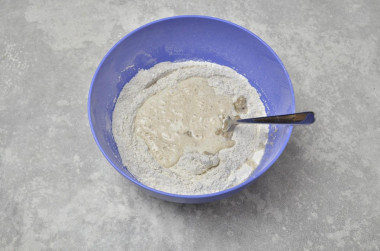
Add salt to the flour, mix, pour in the remaining water, vegetable oil and sourdough. Knead the dough. I used a mixer, but you can do it with your hands. As I did in the end. The dough turned out to be obedient, homogeneous and not sticky.
Step 6:
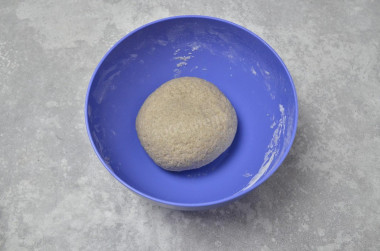
Assemble the dough into a ball, cover the bowl with a towel, film or lid. And put it away in a warm place for an hour for proofing. I put the bowl back in the oven.
Step 7:
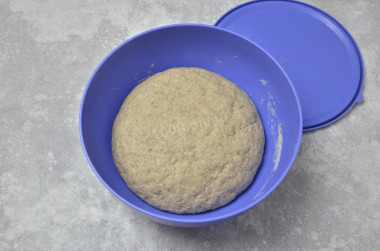
After an hour, the dough will have to grow twice.
Step 8:
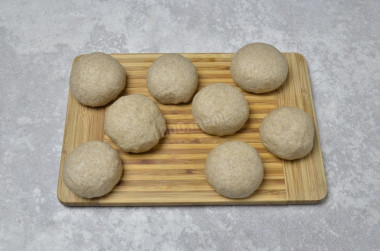
Divide it into equal parts. I got 8 pieces. Form a round bun from each piece. To do this, pinch the edges to the center, as if collecting a knot, then turn the workpiece over and roll it on the board so that it is rounded.
Step 9:
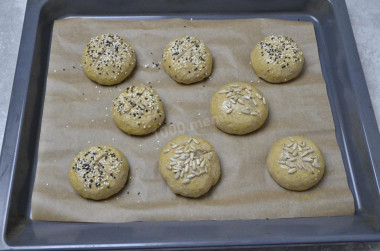
Place the buns on a baking sheet lined with parchment. Take the yolk of a chicken egg and lightly beat it with a fork. Lubricate each bun with a cooking brush. If desired, sprinkle them on top. I used a mixture of white and black sesame and sunflower seeds. Additionally, I also made incisions on each bun with a sharp knife.
Step 10:
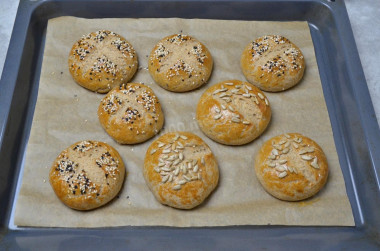
Turn on the oven at 50 ° C and put a baking sheet with buns in it for 20 minutes. This will speed up the proofing time. Then, without removing the baking sheet, increase the temperature to 180 ° C and bake the buns for 25-30 minutes, depending on the characteristics of your oven. They should be well browned.
Step 11:
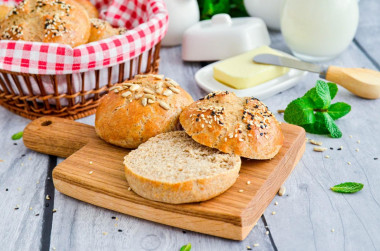
Cool the finished buns a little and serve them to the table. They are good both in warm and cooled form. Enjoy your meal!
Very tasty buns! Soft inside, with a fragrant crust on top. They are very tasty warm with butter. I ate them afterwards, slightly heating them in the microwave. I was a little short of salt, you can increase its amount to one teaspoon.
Be prepared for the fact that flour may need more or less than indicated in the recipe. Focus not on the amount of flour, but on the desired consistency of the dough. To avoid mistakes, read about flour and its properties!
Keep in mind that everyone's ovens are different. The temperature and cooking time may differ from those specified in the recipe. To make any baked dish successful, use useful information about the features of ovens !
Important! Using dry yeast, it should be borne in mind that they occur in two forms: active and instant (read the instructions carefully before use!).
Active dry yeast looks like beads or small balls. Before applying them, they must be brought out of the "sleep mode". To do this, the active yeast is diluted in warm sweet water, milk or whey. The resulting bubbles, foam or "cap" indicate that the yeast is ready for further use. Active dry yeast must be brought to complete dissolution in the liquid, otherwise, due to the remaining grains, the dough may not rise and the baking will be spoiled (yeast grains that have not dissolved in the liquid and got into the dough will not disperse on their own, which means they will not work).
Instant dry yeast is easier to use. They do not need to be activated before use. Such yeast, along with other ingredients, is simply added to the dough. As a result, the baking time is reduced.
It should also be remembered that both types of dry yeast may differ in their activity from different manufacturers.
Caloric content of the products possible in the composition of the dish
- Granulated sugar - 398 kcal/100g
- Sugar - 398 kcal/100g
- Vegetable oil - 873 kcal/100g
- Dried whole safflower seed kernels - 615 kcal/100g
- Sunflower seeds - 560 kcal/100g
- Dried whole sesame seeds - 563 kcal/100g
- Shelled sesame seed - 582 kcal/100g
- Salt - 0 kcal/100g
- Water - 0 kcal/100g
- Wheat flour - 325 kcal/100g
- Egg yolks - 352 kcal/100g
- Rye flour - 305 kcal/100g
- Dry yeast - 410 kcal/100g


